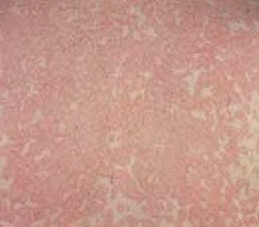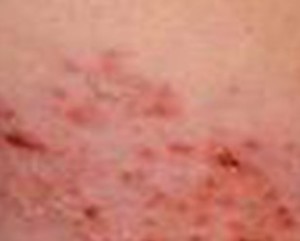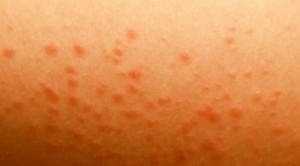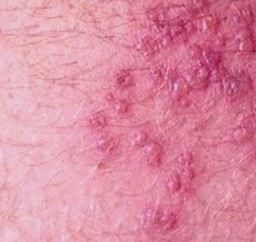Skin conditions such as skin rashes are one of the earliest indicators or symptoms of an HIV/AIDS infection. The rashes also help identify and stage the progression of the disease.
An HIV/AIDS rash normally forms within a month or two after getting infected with the dreaded virus. Just like the other symptoms of HOV/AIDS, it is also possible for patients to mistake the rashes to be a symptoms of some other kind of viral ailment. It may be noted that HIV/AIDS rash and rash like symptoms affect nearly 90 percent of the individuals who come into contact with the virus, and through the course of the deadly disease.
It may also be noted that skin rashes associated with AIDS may not always occur due to infection by the HIV virus. It can also occur due to simple reasons such as increased sensitivity to certain chemicals or even sunlight, or it may occur as a side-effect of certain HIV medicines. The 3 major classes of HIV medications that can cause skin rashes include NRTIs, NNRTIs, and PIs.
Irrespective of whether the AIDS rash is caused due to drug use, allergic responses, or the virus itself, all affected individuals may experience skin rashes which are flat, reddish, and often full of tiny bumps. One of the characteristic symptoms of AIDS rash is itchiness. The rash may develop on any area of the body, but is more prevalent on the chest and face, and occasionally on the hands and feet. It may even cause oral ulcers.
Some forms of AIDS rash are mild, while some others can be serious and deadly, often because of the extensive skin damage that they cause. Two severe forms of AIDS rash that can occur, usually due to use of anti-HIV medications, are TEN or toxic epidermal necrolysis and SJS or Stevens-Johnson syndrome. The former is more serious and covers more than 30 percent of the total skin surface on the body.
Broad categories of AIDS rash
Skin rashes associated with AIDS are usually classified into 3 broad categories, i.e., bacterial, viral, fungal, and parasitic infections; generalized dermatitis; and skin lesions or tumors.
- Bacterial, viral, fungal, and parasitic infections
Several different kinds of fungal, bacterial, parasitic, and viral infections tend to affect people with HIV/AIDS during the course of the illness. Some of the common types of infections include molluscum contagiosum, herpes zoster, thrush, and oral hairy leukoplakia.
- Molluscum contagiosum: It is a very contagious viral infection that can affected people with HIV/AIDS. The associated AIDS rash features pinkish or skin-colored lumps on the skin. Affected people need to undergo repetitive treatments, such as cryotherapy, laser therapy, and topical medications to completely eliminate the rash.
- Herpes zoster: It is virus which causes chickenpox; it can also cause shingles which is marked by painful bumps and rashes on the skin in people with AIDS. Ant-viral medications are used to treat this form of AIDS rash.
- Thrush: This kind of AIDS rash occurs due to a fungal infection and is marked by the development of a thick whitish layer on the tongue. Recurrent episodes of thrush in HIV patients can be very difficult to treat. The condition is treated via oral rinses, anti-fungal drugs, and oral lozenges.
- Oral hairy leukoplakia: It is a viral infection of the mouth marked by formation of whitish thick lesions on the tongue of a person with AIDS. Treatment involves regular use of antiretroviral medications which enhances the immune system and thus helps naturally get rid of the infection.
- Generalized dermatitis
Generalized rashes on the skin are the most common type of AIDS rash that affects the patients. Some of the main types of generalized dermatitis that are observed in HIV patients include the following:
- Atopic dermatitis: This type of AIDS rash is a chronic inflammatory skin condition usually marked by the formation of scaly, reddish, and itching rashes. Nearly 30 to 50 percent of AIDS patients may suffer from atopic dermatitis. The rash is treated via topical steroids.
- Xerosis: This type of AIDS rash is marked by overall dry skin. It is observed in about 20 percent of HIV patients. The dryness is generally noticed in the extremities of the body and results in scaly, itchy, and dry patches on the skin. Topical steroids as well as urea-containing topical moisturizers are used to treat this condition.
- Eosinophillic folliculitis: It usually affects HIV patients during the later stages of the infection. This type of dermatitis is marked by reddish, itchy bumps which form on and around the hair follicles. The AIDS rash may develop on any region of the body, but usually occurs in groups on the upper part of the body. Topical steroids, antihistamines, and antiretroviral medications which improve the immune system of the patient are used to treat the condition.
- Prurigo nodularis: This type of AIDS rash is marked by development of scab-like lumpy and itchy patches on the skin. The condition typically affects HIV infected people with immune systems that are severely weakened. Prurigo nodularis is treated with antiretroviral which help enhance the immune system as well as topical steroids.
- Skin tumors or lesions
- Kaposi sarcoma is the most common type of malignant skin rashes associated with HIV/AIDS infection. The cancer affects the blood vessels and/or the lining or wall of the lymph nodes. The accompanying AIDS rash lesions that occur on the skin are characteristically dark reddish, purple, or brown in color.
- Kaposi sarcoma may affect the digestive tract, the lungs, and the liver of the patient, thereby causing breathing problems, breathlessness, and swollen skin.
- The lesions associated with the cancer typically develop when there is a dramatic drop in the count of white blood cells. Hence, doctors consider the development of the lesions to a clinical sign that the immune system is severely impaired and that the diagnosis needed to be changed from HIV infection to AIDS.
- Surgery, radiation therapy, and chemotherapy are used to treat Kaposi sarcoma. It has been observed that continuous antiretroviral drug therapy in HIV infected patients helps reduce the incidence of this AIDS rash associated cancer.
AIDS rash pictures



